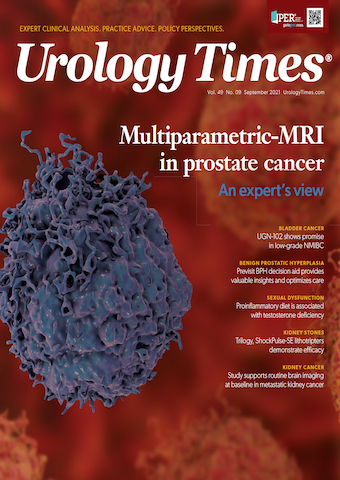Publication
Article
Urology Times Journal
Post-RP billing for biofeedback raises questions of coverage, medical necessity
Author(s):
Medicare typically does not pay for preventive services unless specifically allowed.
Is biofeedback a billable service after a robotic radical prostatectomy during the global period?
Jonathan Rubenstein, MD

Payment for a procedure is based on the global surgical package, which means payment includes all the services that would typically be furnished by a surgeon prior to, during, and after a procedure. For example, included in the surgical package is the typical work the day of the procedure, all additional medical or surgical services provided in a postoperative period including hospitalization, discharge from the hospital, and routine postoperative visits within the global period. Additionally, payment includes postsurgical pain management and all medical and procedural postoperative services required because of complications that do not require additional trips to the operating room, as well as follow-up visits during the postoperative period of the surgery that are related to recovery from the surgery.
Mark Painter

The following are not included: visits unrelated to the diagnosis for which the surgical procedure is performed, unless the visits are due to complications of the surgery; treatment for the underlying condition or an added course of treatment that is not part of normal recovery from surgery; diagnostic tests and procedures, including diagnostic radiological procedures; clearly distinct surgical procedures that occur during the postoperative period that are not reoperations or treatment for complications; procedures that are more extensive because the initial procedure failed and treatment of complications that require a return to a qualified operating room.
In this case, 55866 is a 90-day global procedure. We could argue a couple of points within the definition of the global that may or may not support coverage of biofeedback during the global period: No. 1: Is the biofeedback a treatment for a complication of the procedure or treatment for an underlying condition? No. 2: Is the treatment an added course of treatment not a part of the recovery from surgery?
Outside the global payment concerns, we also have to consider that Medicare typically does not pay for preventive services unless they are specifically allowed. So we would also have the question “Is the treatment provided for an existing condition, or is the biofeedback provided to prevent a complication or condition that may occur in the future?”
The questions are moot for most of the postoperative period for Medicare patients, as the issue of coverage of biofeedback is the most common and biggest roadblock.
Medicare covers biofeedback for the treatment of stress and/or urge incontinence in cognitively intact patients when documentation supports a previously failed trial of pelvic muscle exercise (PME) training. A failed trial is observed when no significant clinical improvement in urinary incontinence is noted after completing 4 weeks of a physician-prescribed plan of PME. Medical record documentation of the failed PME trial must be present to justify coverage for biofeedback.
This coverage guideline has 2 requirements: (1) that the patient has or has received a diagnosis of stress or urge incontinence—this means your physician will need to provide a diagnosis for the patient appropriately after recovery from surgery; (2) according to the coverage guidance, Medicare will cover biofeedback only after 4 weeks of pelvic floor therapy has failed. After meeting these coverage guidelines, you will need to circle back and answer the questions surrounding the global inclusion to determine coverage.
Recall that these are Medicare coverage guidelines, so private payers may differ. And these are the current coverage guidelines, which can be changed, but rarely do these change rapidly, and they will not change without supporting data. In the long run, with appropriate proof, coverage may change. In the short term, you may be able to argue medical necessity and outcomes for coverage on a case-by-case basis with your Medicare carrier.
The answer to your question is that coverage is very unlikely as you will have to have the data (in peer-reviewed articles) and time to push for medical necessity (to override the coverage issue) and you will have to satisfy the global inclusion questions (either the patient had a pre-existing condition or the treatment is an added course of therapy not a part of the recovery from the surgery).If you do decide to challenge for reimbursement, please refer to our article from last year on this subject.1
CPT [Common Procedural Terminology] code 90911 (biofeedback training, perineal muscles, anorectal or urethral sphincter, including EMG and/or manometry) was deleted on January 1, 2020. It was replaced with 2 new time-based codes: CPT codes 90912 and 90913.
CPT code 90912’s description reads, “biofeedback training, perineal muscles, anorectal or urethral sphincter, including EMG and/or manometry, when performed; initial 15 minutes of one-on-one physician or other qualified health care professional contact with the patient.” By comparison, CPT code 90913 is an add-on code to “describe each additional 15 minutes” of one-on-one physician or other qualified health care professional contact with the patient. Note that CPT code 90913 must be used in conjunction with code 90912; it cannot be billed alone. Please also note that the time is based on one-on-one face-to-face time, so there should be no overlap with other patients.
Send coding and reimbursement questions to Jonathan Rubenstein, MD, and Mark Painter c/o Urology Times®, at UTeditors@mjhlifesciences.com.
Questions of general interest will be chosen for publication. The information in this column is designed to be authoritative, and every effort has been made to ensure its accuracy at the time it was written. However, readers are encouraged to check with their individual carrier or private payers for updates and to confirm that this information conforms to their specific rules.




























